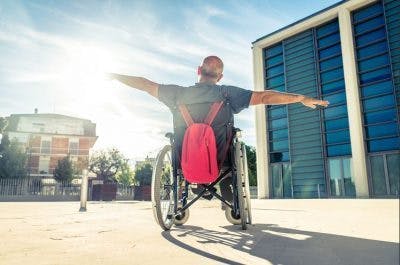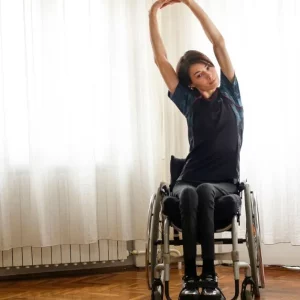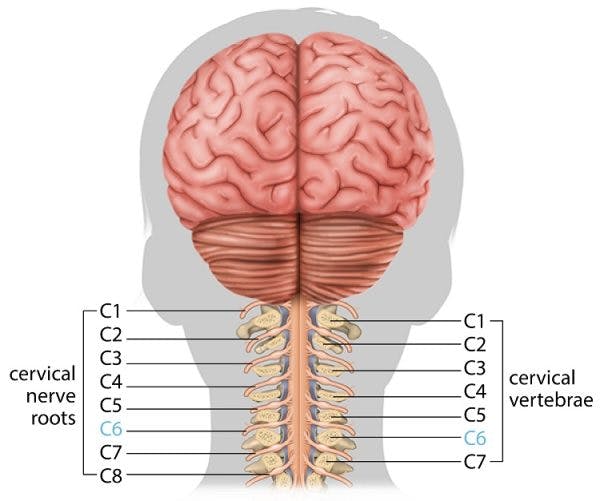Is massage therapy for spinal cord injury recovery effective? It’s a question many people ask—and for good reason. Living with a spinal cord injury often means dealing with chronic pain, muscle stiffness, and reduced mobility. Fortunately, massage therapy isn’t just a way to relax—it may also offer real relief and support your recovery journey.
In this article, we’ll break down how massage can help ease common complications and boost overall well-being after SCI. Let’s dive in.
Benefits of Massage Therapy for Spinal Cord Injury
Massage is a manual therapy involving soft tissue manipulation and it can help spinal cord injury patients achieve both mental and physical relief. There are many techniques massage therapists may use, some of which require very light pressure and others which are more intense. While the goals of massage therapy may differ by individual, but may include reduced muscle tightness, better circulation, pain relief, and improved wellbeing.
It’s essential for spinal cord injury survivors to communicate with their massage therapist. Letting your therapist know what your goals for massage therapy are, as well as where you feel pain, stiffness, or sensitivity, is essential for the best therapeutic results. In the following section, we’ll explain a few of the many benefits of massage therapy, including how it can help alleviate complications of SCI like spasticity, pain, poor sleep quality, and anxiety.
1. Muscle Relaxation
Many spinal cord injury survivors experience spasticity, which is when the muscles are overactive due to impaired communication between the muscles and the brain. This causes the affected muscles to involuntarily contract, leading to tightness and muscle shortening.
Massage therapy can help lengthen spastic muscles, which can increase range of motion and reduce stiffness. By stimulating the muscles below the level of injury, massage therapists may even be able to help rebuild the connection between the brain and muscles.
2. Improved Circulation
Spinal cord injury patients are more likely to be inactive due to their sensorimotor impairments. When you don’t move enough, blood may start to pool in your arms and legs, and less of it returns to the heart. This can result in swelling and increase the risk of blood clots.
Massage therapy helps to increase blood flow, which allows all areas of the body to receive a sufficient supply of blood for optimal functioning.
3. Pain Relief

Many spinal cord injury survivors experience chronic pain, which can disrupt their quality of sleep, motivation to work toward rehabilitation, and ability to perform tasks independently. In a 2021 study, spinal cord injury patients reported massage therapy to be one of the most effective non-pharmacological treatments for their pain.
This may be because of the muscular relaxation experienced during massage therapy, which reduces the occurrence of painful muscle contractions.
4. Minimal Risk
After massage therapy, survivors may feel some mild temporary pain, discomfort, or bruising.
However, the chances of experiencing any severe side effects are very minimal because massage therapy is non-invasive and non-pharmacologic. While it may be uncomfortable at times, massage therapy should not be painful. If you do experience pain during a massage therapy session, let your therapist know so they can modify their technique as needed.
5. Improved Mental Health

Adjusting to life after spinal cord injury can be overwhelming and challenging, which is why mental health disorders like depression and anxiety are more common in SCI survivors than the general population.
It’s suggested that massage therapy, and even a chair massage, can decrease stress hormone levels and relieve depression. Therefore, in addition to its physical effects, massage therapy has the potential to promote mental wellness.
Does Massage Therapy for Spinal Cord Injury Actually Work?

Is massage therapy for spinal cord injury starting to sound too good to be true? Well, there are some things to keep in mind.
It’s difficult to directly measure the effects of massage therapy because you can’t really set up a placebo (you can’t fake a massage). Therefore, the results are subject to what the patient perceives. If they believe massage therapy works, they’re probably going to report positive effects. If they’re skeptical and experience minimal benefits, they may not report any difference.
Another factor when considering massage therapy is that its effects are temporary. In other words, regular massage therapy sessions are vital to fully reap its benefits.
So while individually, the sessions may not seem too costly, over time when you add up the total cost, massage therapy may not be the most affordable long-term option.
Evidence-Based Results of Massage Therapy for Spinal Cord Injury
Although it has not been extensively researched, there have been several studies carried out regarding the effects of massage therapy for spinal cord injury recovery. Here’s an overview of some of the most recent findings:
- According to a 2022 study, 76% of spinal cord injury survivors believed that massage therapy helped relieve their neuropathic pain.
- This 2022 case study found that massage therapy helped to relieve neck and arm numbness, as well as upper body stiffness when used in association with other
rehabilitative therapies.
- A 2024 article looking at recent advances in spinal cord injury treatment advised that while massage therapy has been shown to relieve neuropathic pain, there is little evidence pointing toward its ability to relieve other types of SCI-related pain.
- This 2016 randomized control trial found that massage therapy helped to relieve chronic pain and fatigue. Interestingly, participating in a guided imagery intervention over the same time period resulted in similar outcomes.
While the effects may not be long-lasting, there is potential for massage therapy to promote positive changes among spinal cord injury survivors.
Understanding Massage Therapy for Spinal Cord Injury

While research on massage therapy for spinal cord injury is still growing, many people with SCI have found it to be a valuable part of their recovery—especially for managing pain, muscle tightness, and stress. Because it’s generally low-risk and non-invasive, massage therapy could be a smart first step before exploring more aggressive treatments like medication or surgery.
If it brings even a little relief and comfort, it may be well worth incorporating into your care routine.











